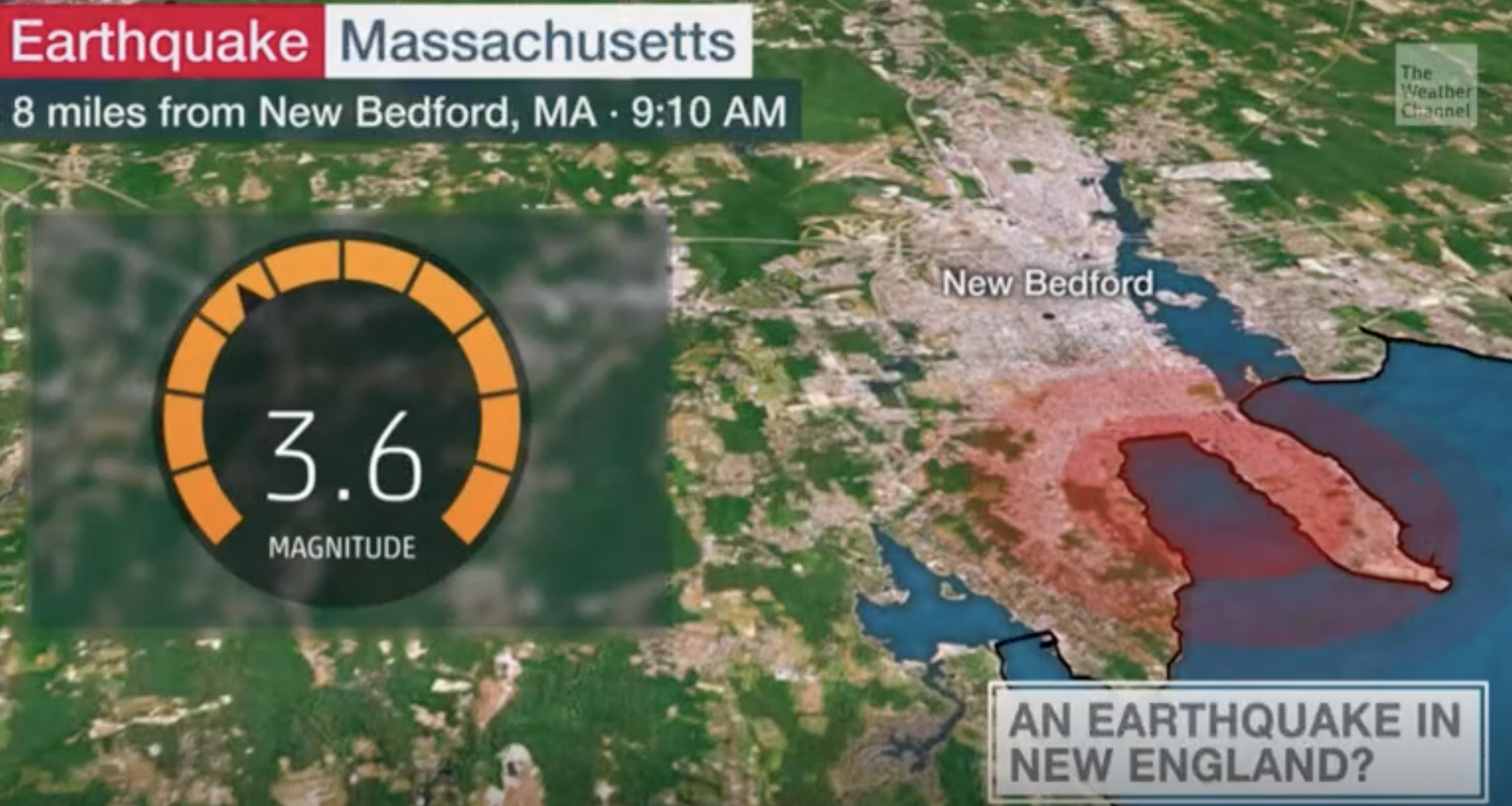3.6 magnitude earthquake shakes up RI
The 3.6 magnitude earthquake from Massachusetts could be felt in Rhode Island. Photo from the weatherchannel.com.
A rare earthquake hit southern New England on Sunday, Nov. 8 around 9:10 a.m, creating plenty of excitement among the population.
The epicenter of the earthquake was at Mishaum Point in Dartmouth, Massachusetts, but could be felt all over the southern New England region, including throughout Massachusetts and Rhode Island, some areas in Connecticut and even in southern areas of New Hampshire.
“The reason we have coastal earthquakes is because of a slip on a fault,” said Brian Savage, chair of the University of Rhode Island’s geoscience department.
According to Savage, faults are pieces of the Earth that exist within tectonic plates, which are pieces of the earth’s crust. The faults have been formed by the constant expansion of Earth’s surface which created the separated continents on Earth from previous large land masses like Pangea.
“The East Coast is built up from a very large mountain range called the Appalachian Mountains,” Savage said. “They used to be the size of the Himalayas, but as the Earth expands, they become smaller and [because of this] now there are pre-existing faults on the south parts of Rhode Island and Massachusetts. There is movement in these [fault] areas, but the movement is happening slowly.”
The United States Geological Survey (USGS) originally read the November earthquake as a 4.2 magnitude on the Richter scale, but after reevaluating the data after it struck, it was ultimately determined to be a 3.6 magnitude. The Richter scale ranges from 0-10, with a higher number meaning a more powerful earthquake.
“The magnitude of an earthquake is based on the size of the waves and the distance away from the source of the earthquake,” Savage said.
Earthquakes are less common in Rhode Island in comparison to places like California and Japan. This is because Rhode Island does not have direct contact with the edge of a tectonic plate. According to the USGS, the Earth has 15 tectonic plates. The East Coast is located on the North American plate, which spans from the West Coast of California, near the San Andreas fault, to the middle of the Atlantic Ocean, where it forms the Mid-Atlantic ridge.
However, earthquakes are still possible on the East Coast due to fault slips.
“Fault slips occur when two pieces of rocks move toward each other and there is compression,” Matt Wei, marine geology and geophysics professor at URI, said. “Earthquakes [on the East Coast] are intraplate earthquakes, meaning they happen within one tectonic plate, not between plates.”
A 3.6 magnitude earthquake is considered on the larger side for Rhode Island and Massachusetts, but there have been many sizable earthquakes in recent years. In 2011 there was a 5.8 magnitude earthquake in Virginia, and in 2010, the Port-au-Prince Earthquake devastated Haiti, killing over 300,000 people and registering at a magnitude 7.0. However, earthquakes higher than a magnitude 5.0 are extremely rare in New England.
According to Wei, faults on boundaries of tectonic plates are active and produce lots of earthquakes such as those that take place in California. Rhode Island, however, is situated on smaller, more ancient faults. These types of faults don’t move as much anymore, Wei said, but sometimes small faults will actually shift, causing earthquakes like the one felt this month.
The professors stress that earthquakes are unpredictable, so there isn’t a certain way to know if there will be another one this strong in Rhode Island within our lifetimes, but the possibility is never out of the question.





